In the field of power plant valve technology, packing leakage in high-temperature, high-pressure steam control valves remains a critical safety hazard and operational challenge. Such leakages not only risk forced shutdowns of power plants, triggering costly chain-reaction outages, but also pose significant safety threats due to the potential for high-temperature medium spray.
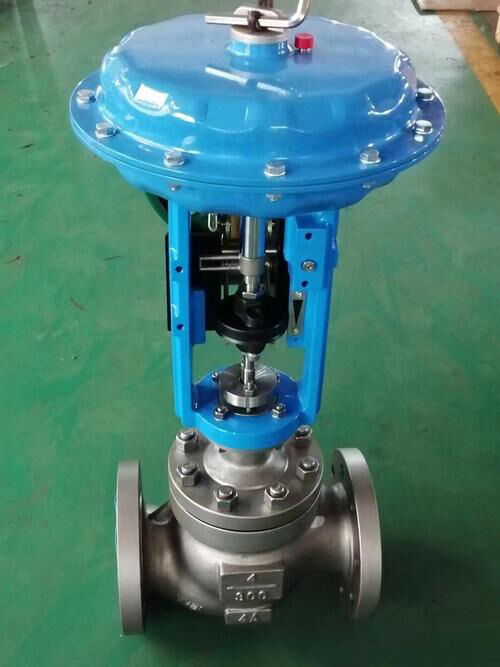
Currently, many valve manufacturers have yet to systematically address this issue. A widespread reliance on "experience-based" judgment and "probabilistic luck" persists:
Some valve companies assume that leakage is a rare, accidental event based solely on previous projects without issues. This ignores the fact that low valve operation frequency on-site temporarily conceals underlying risks. Once valve cycling reaches a critical frequency, sealing components suffer wear and packing ages, triggering a chain reaction that exponentially increases leakage risk.
This misconception, namely using low-frequency operation to mask high-frequency hazards, allows the problem to constantly lurk within fluid systems, creating a "time bomb" threatening power plant safety.
This analysis delves into the seal failure mechanism and leakage evolution in high-temperature, high-pressure conditions, breaking down the hazard causes step-by-step:
- High-temperature creep of packing materials
- Structural deformation from high-pressure erosion
- Fatigue wear of sealing surfaces caused by high-frequency valve cycling
Valve engineers must integrate cutting-edge sealing technology and emphasize tailored high-temperature, high-pressure sealing solutions. This involves multi-dimensional innovations such as optimized material formulations, structural mechanics design, and enhanced fatigue resistance, providing systematic assurance for reliable sealing in power plant valves.
The industry must shift from experience-driven approaches toward scientific risk control: sealing failure in high-temperature, high-pressure scenarios is not a matter of chance but a solvable engineering challenge through technology iteration.
The failure sequence typically appears as:
- Graphite Powder Appearing
- Liquid Leaching
- High Pressure Steam Explosion
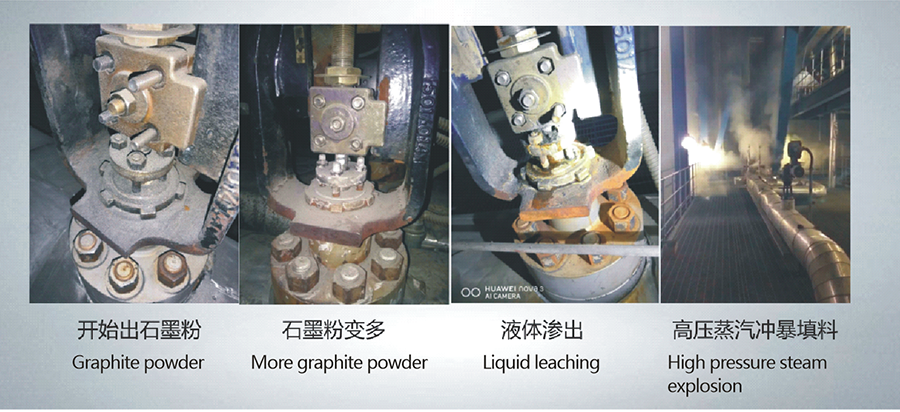
Under intense erosion by high-temperature, high-pressure steam, the first part to fail in the packing is the lubricating function within the packing. Once lubrication is lost, dry friction begins, generating graphite powder, which is immediately swept away by the steam flow.
Repeated high-frequency valve operations continuously strip graphite powder until the bottom packing is completely worn away, leading to stem stress failure.
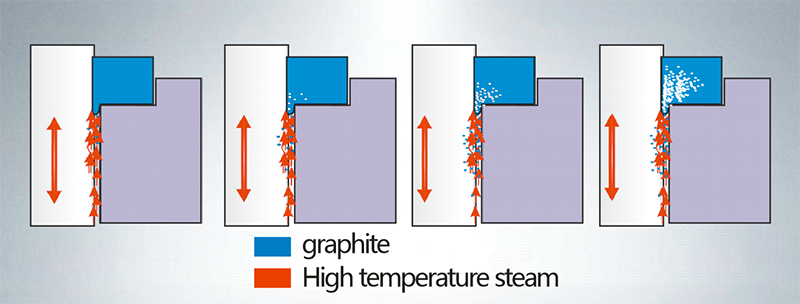
Traditional packing, usually composed of upper and lower braided layers with a pure graphite core, has significant safety shortcomings under harsh steam conditions:
When the bottom braided packing is eroded and damaged by high-speed steam flow, the high-temperature steam directly impacts the middle pure graphite zone.
Graphite's inherent low strength and poor erosion resistance make it vulnerable. Under the high kinetic energy impact of steam flow—which far exceeds that of liquid media at the same pressure—the graphite structure easily disintegrates, causing leakage.
To counteract steam erosion, a multi-layer composite packing system at the bottom is recommended, with key technical points as follows:
Incorporate 3-5 layers of braided packing with approximately 20% fine-diameter metal wire (e.g., stainless steel or nichrome wire).
The metal wires must be evenly distributed, with individual wire diameters controlled between 0.07–0.09 mm.
This fiber, large in number and thin in size, interweaving structure provides dual benefits:
Erosion resistance: The rigid metal wire framework withstands direct high-speed steam impingement, preventing rapid fiber breakage.
Pressure dispersion: Analogous to a multi-stage throttle silencer, the fine metal wire layers create a microporous structure that gradually converts steam kinetic energy into frictional heat, reducing flow velocity and erosive force. Testing shows this design can reduce steam erosion speed on the packing surface by 30%–50%.
Insert 1-2 intermediate "buffer layers" between the metal-reinforced bottom packing and the pure graphite middle layer (e.g., graphite-impregnated aramid braided packing).
These layers combine rigidity and flexibility to absorb residual steam energy, preventing direct metal-graphite friction damage, and establish a gradient protection system:
"Erosion-resistant outer layer → buffer transition layer → core sealing layer".
This structure, through combined material mechanical properties and fluid dynamics optimization, fundamentally solves the traditional "bottom layer failure leads to overall collapse" problem. Even with partial wear of the bottom packing, the metal wire framework maintains the packing's shape and blocks direct steam impact on the graphite core, reducing leakage risk by over 90%.
Field data shows that for valves operating at switching frequencies ≥ 200 cycles/month under high-temperature, high-pressure steam, this solution extends packing life by 3–5 times, significantly reducing unplanned shutdowns caused by sealing leaks.
Core Principle: Layered Dissipation of Steam Kinetic Energy
This composite design dissipates the destructive steam kinetic energy via structural layering rather than relying on single-material hardness. It aligns with the fluid mechanics of high-temperature, high-pressure environments and pushes beyond the performance limits of traditional graphite seals, offering a practical technical route for long-term safe valve operation in power plants.
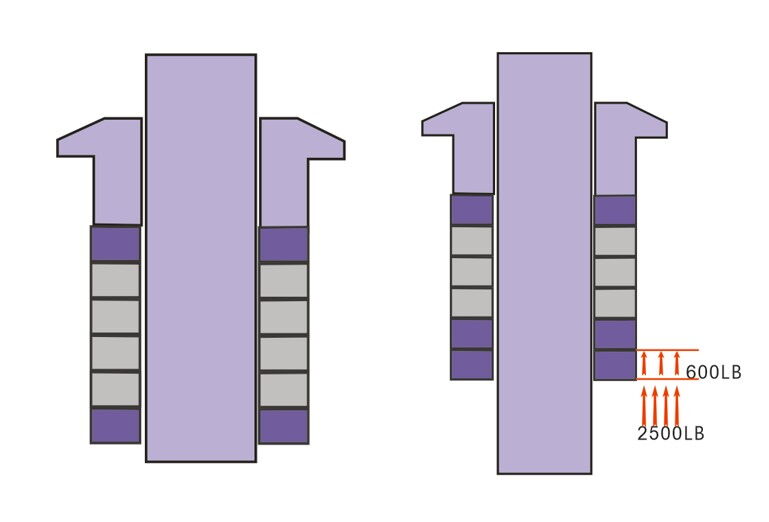
Contrary to the simplified view of packing as merely an "erosion protective layer", under high-temperature, high-pressure steam, its core role is forming a dynamic sealing system combining strength protection and surface cleaning. Both functions are indispensable:
- Basic function: Erosion resistance and strength support
Packing with metal wire braided layers combines a rigid metal wire skeleton and flexible matrix (aramid/graphite fibers), forming the first line of defense against steam erosion. The metal wire network can bear over 90% of fluid impact, protecting the graphite core. Tests show packing without metal wires suffers 8–10 times more wear after 100 valve cycles at steam velocity ≥ 30 m/s compared to metal wire-reinforced packing.
- Often-overlooked "scraping self-cleaning" function
High-temperature steam carries fine graphite particles (from graphite creep or slight wear) that adhere to the valve stem surface. The fine metal wires (diameter ~0.07–0.08 mm) in the packing braid act like flexible scrapers during valve movement:
Particle removal: The metal wire tips' micro-protrusions (surface roughness Ra 1.6–3.2 μm) shear off graphite particles attached to the stem, preventing them from being carried out of the packing chamber. Tests show packing without this scraping function loses 40%–60% more graphite.
Volume conservation: Removed graphite particles are trapped within the packing's porous structure and reincorporated into the sealing matrix, maintaining the graphite core volume. This is crucial to prevent the chain reaction:
"Compression bolt torque loss → seal load decrease → leakage".
Graphite volume loss of just 5% reduces sealing contact pressure by 12%, crossing which causes seal failure.
The synergy between packing metal wires and valve stem is a dynamic balance of material hardness difference, surface roughness, and frictional work:
- Controlling hardness to avoid stem damage
Metal wires (e.g., 304 stainless steel, hardness HV 150–200) must be significantly softer than the stem surface (typically HV 300–500, treated by nitriding or chrome plating) to ensure that during friction, the metal wires deform and wear instead of the stem surface being scratched. This sacrificial wear keeps stem surface roughness increase within ΔRa ≤ 0.5 μm, preventing leakage acceleration (leakage rises exponentially if scratch depth ≥ 0.1 mm).
- Roughness matching for effective scraping
The metal wire weave density and stem surface roughness must allow "micro-scale meshing":
With stem roughness Ra = 1.6–3.2 μm, the packing's pore size (50–100 μm) effectively traps scraped graphite without forming direct steam channels that erode the graphite core.
Wires that are too thick (>0.5 mm) or loosely woven create erosion paths worsening graphite loss; wires too thin (<0.05 mm) break easily, losing scraping function.
Empirical formula for optimal wire diameter relative to steam velocity (v in m/s):
d ≤ 0.6 × v^0.3
3. Fundamental Contradiction in Traditional Packing: Separation of "Erosion Resistance" and "Self-Cleaning" Functions
The fatal flaw of conventional "upper and lower braided layers + middle pure graphite" designs lies in isolating strength protection from surface cleaning instead of integrating them:
- Limited erosion resistance of single bottom layer
Traditional bottom braided layers (usually <10% coarse metal wire) wear rapidly under high-frequency erosion and fail to shield the graphite core. Steam-carried graphite deposits directly on the stem, which without metal wire scrapers becomes a "graphite transporter." Each valve cycle carries out 0.1–0.5 mg graphite (equivalent to 3%–5% sealing volume lost annually), causing packing load failure.
- Unbuffered graphite core volume loss cascade
Once exposed, the graphite core's low compressive strength (10–20 MPa, far below steam pressure 3–5 MPa) and high porosity (20%–30%) accelerate loss through micro-channel permeation, particle detachment, and pore expansion—a vicious cycle governed by the Preston equation, where loss rate scales with steam velocity squared. For example, at v=50 m/s, graphite loss is 6.25 times that at 20 m/s.
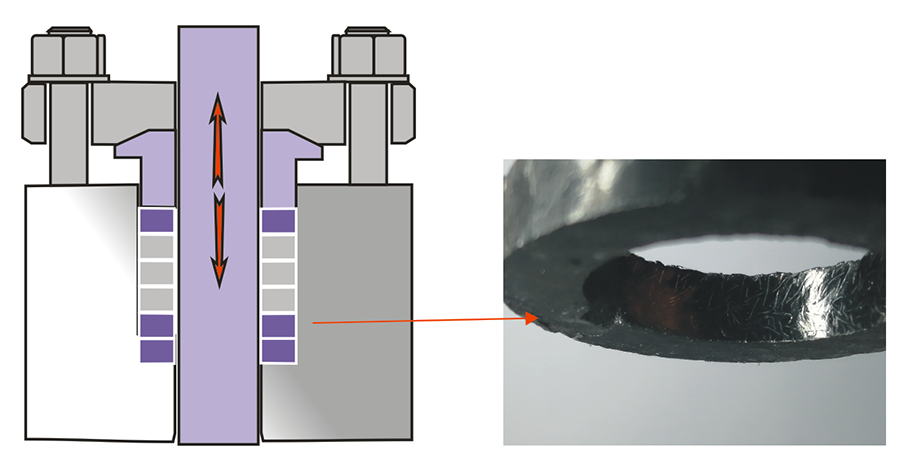
The optimized "multi-layer metal-enhanced bottom packing" constructs a closed-loop system combining:
Energy dissipation (metal wire packing): Multi-stage throttling converts steam kinetic energy into frictional heat, reducing erosive force, while metal wires scrape the stem to prevent graphite loss.
Volume stability (pure graphite core): Protected from direct erosion and particle loss, maintaining seal volume and packing load stability. Testing shows graphite volume loss <0.5% per year with this structure.
Interface adaptation (buffer layer): Balances metal wire rigidity and graphite flexibility, prevents stress concentration damage, and provides space for re-adsorption of scraped graphite, enabling sealing material recycling.
The Essence of High-Temperature, High-Pressure Seal Failure is Functional Imbalance Under Multi-Physics Coupling.
Packing leakage is not caused by a single factor like "insufficient material strength" or "structural defect." Instead, it results from the combined effects of:
- High temperature (thermal expansion mismatch)
- High pressure (stress concentration)
- High-velocity erosion (fluid wear)
- Dynamic valve cycling (tribological behavior)
This breaks the critical chain of "erosion resistance – self-cleaning – load maintenance." Only by achieving multi-dimensional synergy through precise matching of material mechanical properties, tribological interface optimization, and fluid dynamic structural design can the vicious cycle of "leakage → shutdown → maintenance" be effectively interrupted.
This insight not only applies to power plant valves but also provides a comprehensive methodology—from failure analysis to mechanism design—for sealing technology in high-pressure fluid systems.
